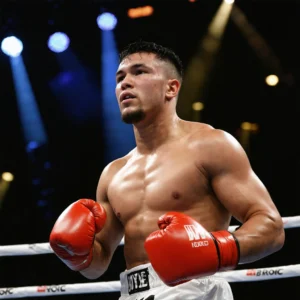
Introduction
Football ignites passion and creativity while simultaneously exposing discrepancies within leadership narratives. Moreover, cultural context and historical influences shape perceptions of authority. In this discussion, I explore the double standards imposed on Black players. I compare these with the leadership qualities celebrated in players like Jordan Henderson. Additionally, I examine the role of media, societal expectations, and community responses in creating an uneven playing field.
Defining Leadership in Modern Football
I lead thee by contemplating what true leadership means. Some define leadership as vocal and assertive, while others recognize quiet influence and experience as hallmarks. For instance, Jordan Henderson champions a leadership style characterized by consistency and respect for every team member. Concurrently, Black players often face additional scrutiny when exhibiting comparable qualities. Furthermore, alternative approaches may include:
- Leading by example
- Offering calm guidance during crises
- Bridging gaps between diverse player backgrounds
These observations underscore that leadership comprises many facets which society sometimes evaluates inconsistently.
Double Standards on Leadership
Initially, media portrayals celebrated Jordan Henderson, emphasizing his resilience and ability to overcome adversities. Simultaneously, Black players experienced criticisms for the same qualities when exhibited in similar circumstances. For example, a passionate player may be heralded as determined if white, yet stereotyped negatively if Black. Consequently, cultural bias often frames assertiveness as aggression depending on the individual’s ethnic background. Moreover, critics frequently overlook the impact of systemic prejudice while extolling selective virtues. Transitioning from theory to practice, I highlight how these double standards hinder the appreciation of true leadership potential among minority ethnic players.
Media Bias in Player Leadership Narratives
Traditional media narratives often underrepresent Black players’ leadership qualities. Additionally, I notice that commentators and pundits sometimes exploit selective language when discussing leadership. They illustrate these double standards through varied terminologies and contextual contrasts. Other narratives perpetuate stereotypical images that obscure the complexity of role models in sport. In addition, modern journalism can, at times, simplify compelling accomplishments as mere personality traits. This simplification often neglects the layered contributions made by leaders from diverse backgrounds.
Comparison with Examples
Consider the following comparisons that clarify existing biases:
- Jordan Henderson receives accolades for calm yet resolute leadership, while Black players demonstrating equivalent behavior may be mischaracterized.
- Media narratives praise resilience in one context but stigmatize displays of passion among Black players.
- Community recognition transforms acts of leadership into celebrated legacies, while criticism undermines similar efforts from minority individuals.
To further illustrate these points, examine the table below that contrasts leadership descriptors frequently used in sports media:
| Leadership Quality | Positive Portrayal | Negative Portrayal |
|---|---|---|
| Calm Assertiveness | Reliable, strategic | Indifferent, detached |
| Emotional Intensity | Passionate, inspiring | Uncontrolled, erratic |
| Experience-Based Wisdom | Respected, admired | Outdated, inflexible |
Thus, media depictions vary incredibly and often reflect hidden biases that require introspection and reform.
Moving Towards Equality
Society must challenge longstanding double standards, and football remains a critical arena for this transformation. Additionally, fans, analysts, and club officials increasingly demand fair recognition of leadership irrespective of ethnic background. In several instances, proactive measures assist in creating a more inclusive sport culture. Moreover, stakeholders contribute to this movement by reassessing leadership values within team dynamics.
Practical Steps and Recommendations
I suggest several practical approaches to bridge the gap:
- Acknowledge and challenge biases: Leaders can initiate dialogue within clubs and communities.
- Promote inclusive narratives: Media outlets must adopt equitable language when describing leadership efforts.
- Implement training sessions: Clubs should incorporate diversity and inclusion workshops.
Furthermore, I list numbered steps clubs might undertake:
- Review historical analyses that highlight discrepancies in leadership portrayals.
- Conduct internal surveys among players to capture diverse leadership styles.
- Develop a communication policy prioritizing fairness and inclusiveness.
- Celebrate outstanding contributions uniformly through award ceremonies.
Parallel to these steps, communities worldwide must ensure that both public opinion and policy mirror the genuine efforts of every leader.
Conclusion
In conclusion, the double standards on ‘leadership’ in football require urgent reassessment. Notably, Black players confront unique challenges shaped by historical and institutional biases. However, I remain optimistic. Progressive dialogue and structural reforms can transform sports culture. Importantly, enthusiasts and professionals continue to demand consistent recognition of leadership qualities that transcend racial barriers. As a result, football evolves into a global platform that values respect, passion, and equality for every individual. Transitioning from critique to action, I emphasize that the future of football depends on our collective ability to embrace diversity in leadership and champion transformative change.




